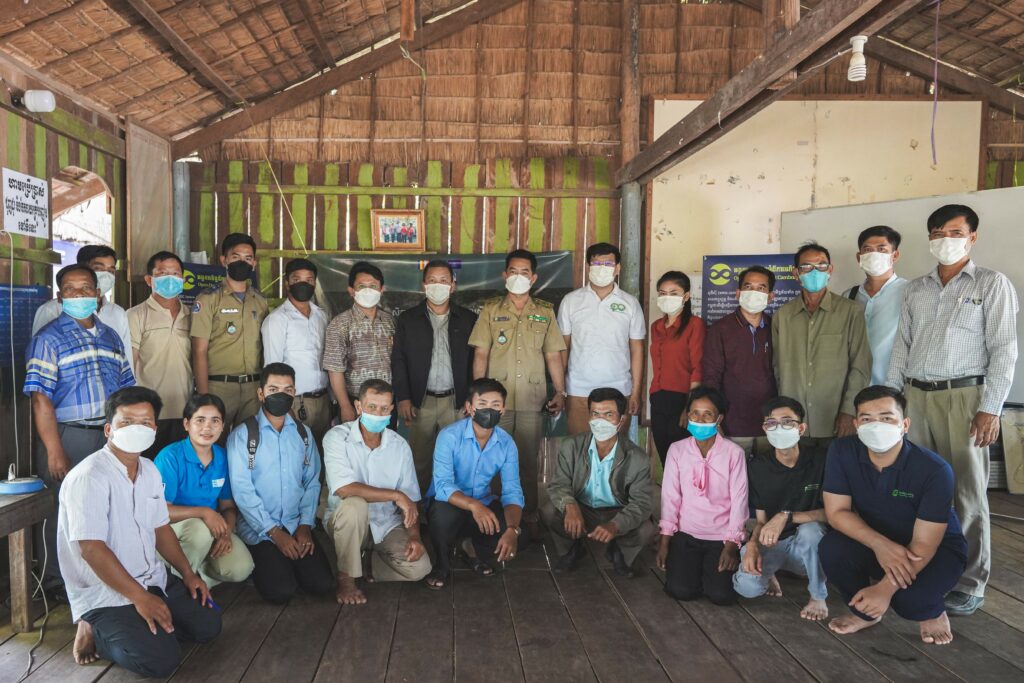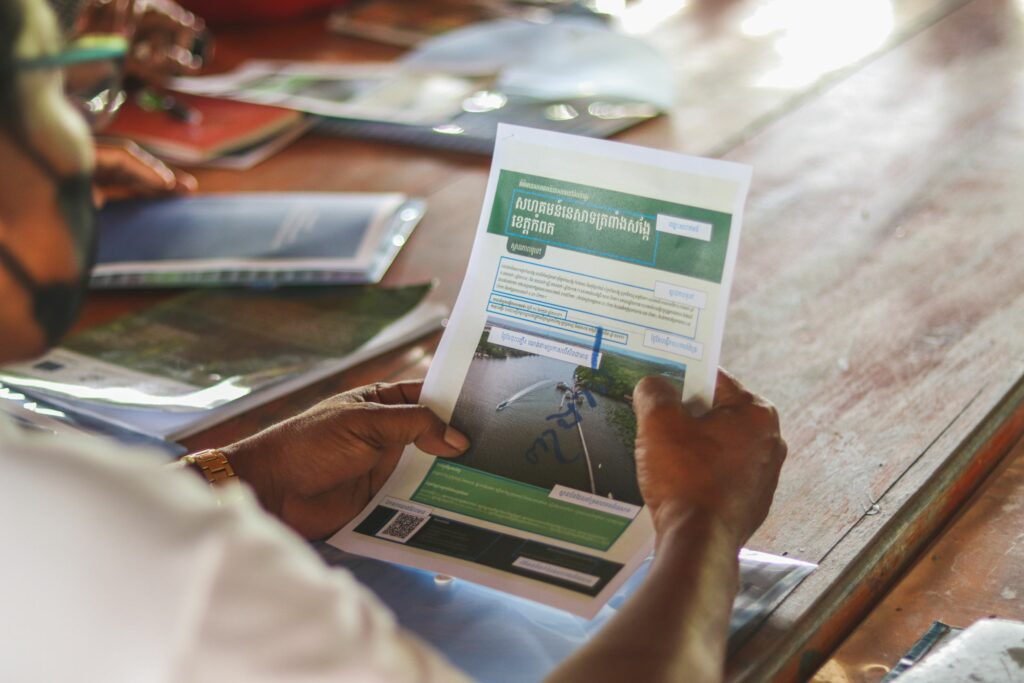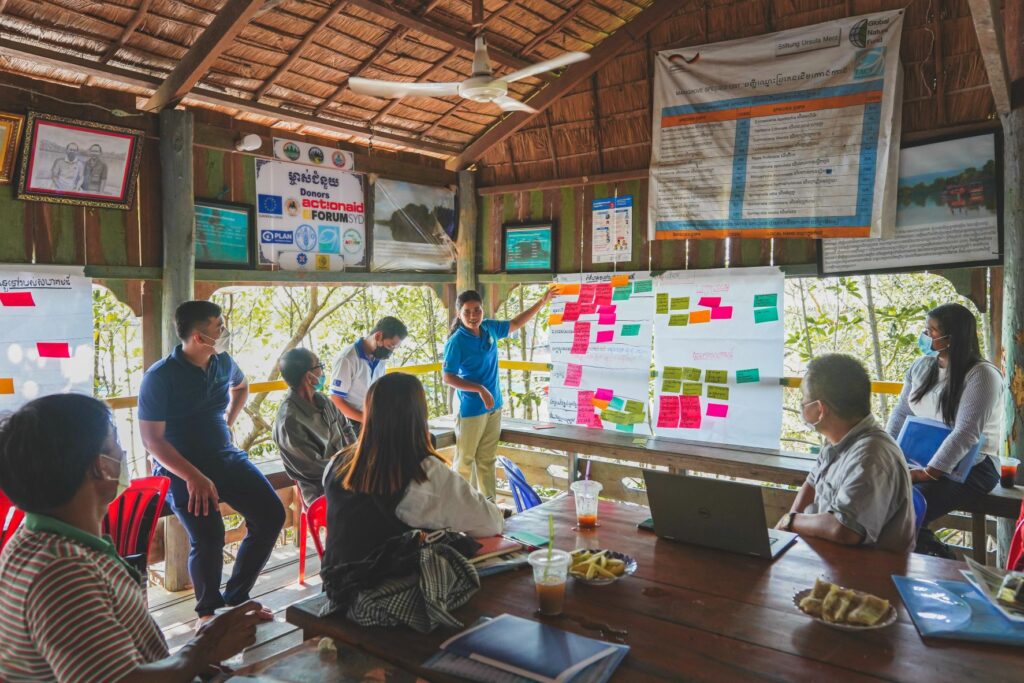Consultation Workshop on Fisheries Conservation Areas
By 2022, there are 447 community fisheries across the country, and 46 community fisheries are located in the coastal areas. There are 5 registered communities located in Kep while 7 out of 10 communities in Kampot have been registered. In Preah Sihanouk, 13 out of 17 communities have been registered; yet, 4 out of 14 communities in Koh Kong have not been registered. The community fisheries play a significant role in providing employment for millions of Cambodians around the country as well as contributing to fisheries management and conservation. Through the Cambodia Programme for Sustainable and Inclusive Growth in the Fisheries Sector (CAPFish), the Royal Government of Cambodia (RGC) and the European Union (EU) are implementing the Strategic Planning Framework for Fisheries Update (SPF) 2015-2024, which is integrated with the National Aquaculture Development Strategy (NADS). The initiative targets obstacles in both the inland and coastal fisheries sectors related to increased food security, improved nutrition, and economic growth.
In the consultation workshop, participants could learn more about the Open Development Cambodia (ODC)’s profile page on “Fisheries Conservation Areas” and dataset on the community fisheries, define the communities’ challenges, as well as the communities could provide inputs for enhancement of the community fisheries infographic designs.
All the community fisheries’ documents including the agreement and community management plan were mostly stored in the library or the community’s office, which is very hard to find and somehow disappears. These documents consist of many pages, and readers cannot catch up with the information for the short time of reading, principally there are not any attractive photos of the community itself. More importantly, some documents are expired.
ODC, in cooperation with the Fisheries Administration (FiA), ActionAid Cambodia, and the Children and Women Development Center in Cambodia (CWDCC), hosted a consultation workshop on “Fisheries Conservation Areas” with the financial support of the European Union (EU), as part of project on “Securing access to and control over land and natural resources for vulnerable community fisheries in the coastal areas of Cambodia,” on 21 April 2022 at Trapeang Sangke Eco-Tourism Community located in Kampot Province, Cambodia. The workshop brought together the participants from the FiA, Fisheries Administration of Cantonment, ActionAid, CWDCC, and community fisheries in the coastal areas such as Kampot, Kep, Preah Sihanouk, and Koh Kong Provinces. The total participants were 31 including 07 females. The participants explored the profile page and infographic and considered if the content and design corresponded with the context, legal frameworks, and actual data.
Inputs on the profile page and infographic design
Significant comments and inputs are collected throughout the consultation workshop to enhance the “Fisheries Conservation Areas” profile page and community fisheries’ infographics. According to the legislative documents on community fisheries and the comments from the FiA officers, they suggested ODC to revise some words on the profile page and infographic. The changes can make the local community’s information more standard and easier to understand. ODC has revised its profile page name from “Fisheries Conservation Areas” to “Fisheries resource management information”. To ensure the consistency of the community fisheries maps, the FiA should provide more coordination numbers or shapefile and update the agreement and management plan to ensure sustainable community management.
Challenges facing community fisheries in the coastal areas
Community fisheries repeatedly face the problem of illegal fishing and mangrove cutting. The challenges in waste management are often recognized due to scarce resources and awareness-raising. Moreover, some development projects have eyed the community’s potential to be taken over or some parts. It makes the community worry since the agreement between the community and the Fisheries Administration’s Chief of Cantonment is expired, and it could be withdrawn anytime. Yet, the significant sign of the community’s boundary on the water is not ready, and the community’s capacity to defend their community is limited.
Plans to strengthen the community fisheries
Besides the plans that appeared in the community fisheries management plan, the communities have the courage and spirit to expand and shield their community by other substantial measures. Together, they commit to protecting the community’s land, livelihood, and existing natural resources (flooded forest, seagrass, mangrove forest, etc.) as well as planting new seagrass and mangrove. The community’s management signs will be placed. The communities have prepared the community patrols to regularly observe any abnormal conditions and fishing or flooded forest crimes within the community. To develop their communities with eco-friendly products, they would establish crab banking. Eco-tourism is also one of the priorities in the community fisheries since it could help the community in many positive manners. The communities plan to create more attractive places and build more infrastructure such as the road to the community, bridges across the mangrove forest, floating sites, and open sides for tourism.
To enhance the communities’ capacity, on 21 January 2022, ODC collaborated with CWDCC to conduct training on promoting the ODC website and its usefulness among the community fisheries in Kep and Kampot Provinces. The training was funded by the EU through the ActionAid Cambodia.
To access more community fisheries data, please visit ODC’s profile page: Fisheries resource management information.




